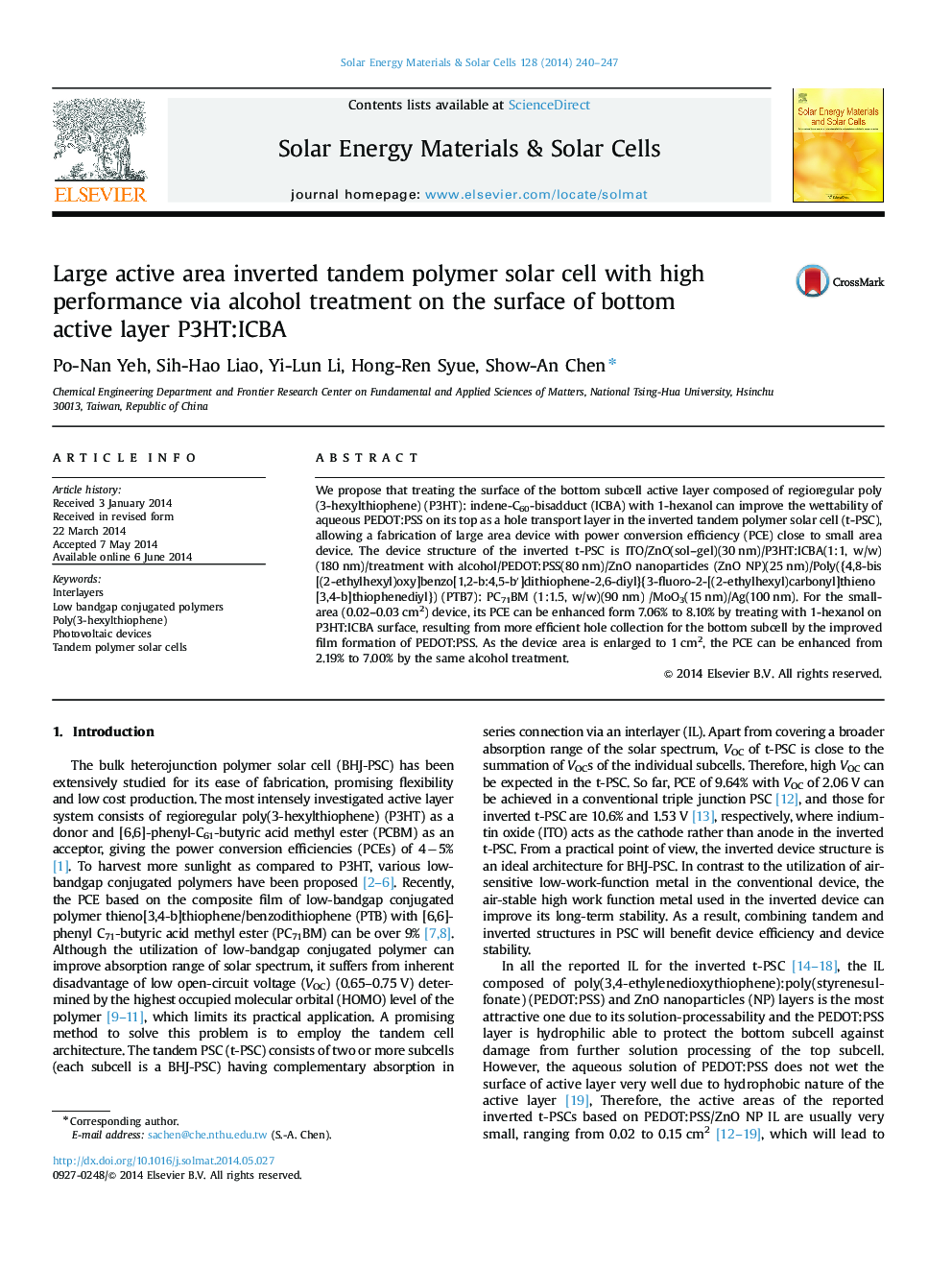| کد مقاله | کد نشریه | سال انتشار | مقاله انگلیسی | نسخه تمام متن |
|---|---|---|---|---|
| 77991 | 49312 | 2014 | 8 صفحه PDF | دانلود رایگان |

• High quality PEDOT:PSS film can form on P3HT:ICBA surface after alcohol treatment.
• P3HT:ICBA surface with alcohol treatment can increase the efficiency of inverted PSC.
• The PEDOT:PSS/ZnO NP is a promising interlayer in large area inverted t-PSC.
• A PCE of 7.00% can be obtained in a 1 cm2 inverted tandem PSC.
We propose that treating the surface of the bottom subcell active layer composed of regioregular poly(3-hexylthiophene) (P3HT): indene-C60-bisadduct (ICBA) with 1-hexanol can improve the wettability of aqueous PEDOT:PSS on its top as a hole transport layer in the inverted tandem polymer solar cell (t-PSC), allowing a fabrication of large area device with power conversion efficiency (PCE) close to small area device. The device structure of the inverted t-PSC is ITO/ZnO(sol–gel)(30 nm)/P3HT:ICBA(1:1, w/w) (180 nm)/treatment with alcohol/PEDOT:PSS(80 nm)/ZnO nanoparticles (ZnO NP)(25 nm)/Poly({4,8-bis[(2-ethylhexyl)oxy]benzo[1,2-b:4,5-b′]dithiophene-2,6-diyl}{3-fluoro-2-[(2-ethylhexyl)carbonyl]thieno[3,4-b]thiophenediyl}) (PTB7): PC71BM (1:1.5, w/w)(90 nm) /MoO3(15 nm)/Ag(100 nm). For the small-area (0.02–0.03 cm2) device, its PCE can be enhanced form 7.06% to 8.10% by treating with 1-hexanol on P3HT:ICBA surface, resulting from more efficient hole collection for the bottom subcell by the improved film formation of PEDOT:PSS. As the device area is enlarged to 1 cm2, the PCE can be enhanced from 2.19% to 7.00% by the same alcohol treatment.
Film uniformity of aqueous PEDOT:PSS on the surface of hydrophobic P3HT:ICBA can be improved by surface treatment with alcohol of appropriate alkyl chain length, which results in an improvement in PCE of inverted t-PSC therewith, especially for large area device. The PCE with 1-hexanol treatment can reach 7.00% for the inverted t-PSC having large active area (about 1 cm2).Figure optionsDownload as PowerPoint slide
Journal: Solar Energy Materials and Solar Cells - Volume 128, September 2014, Pages 240–247